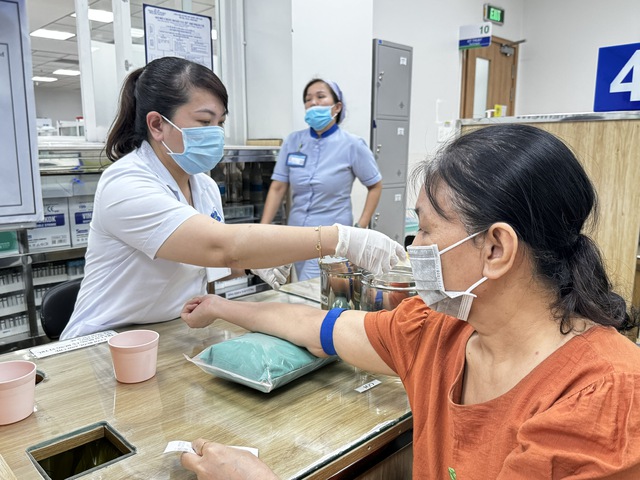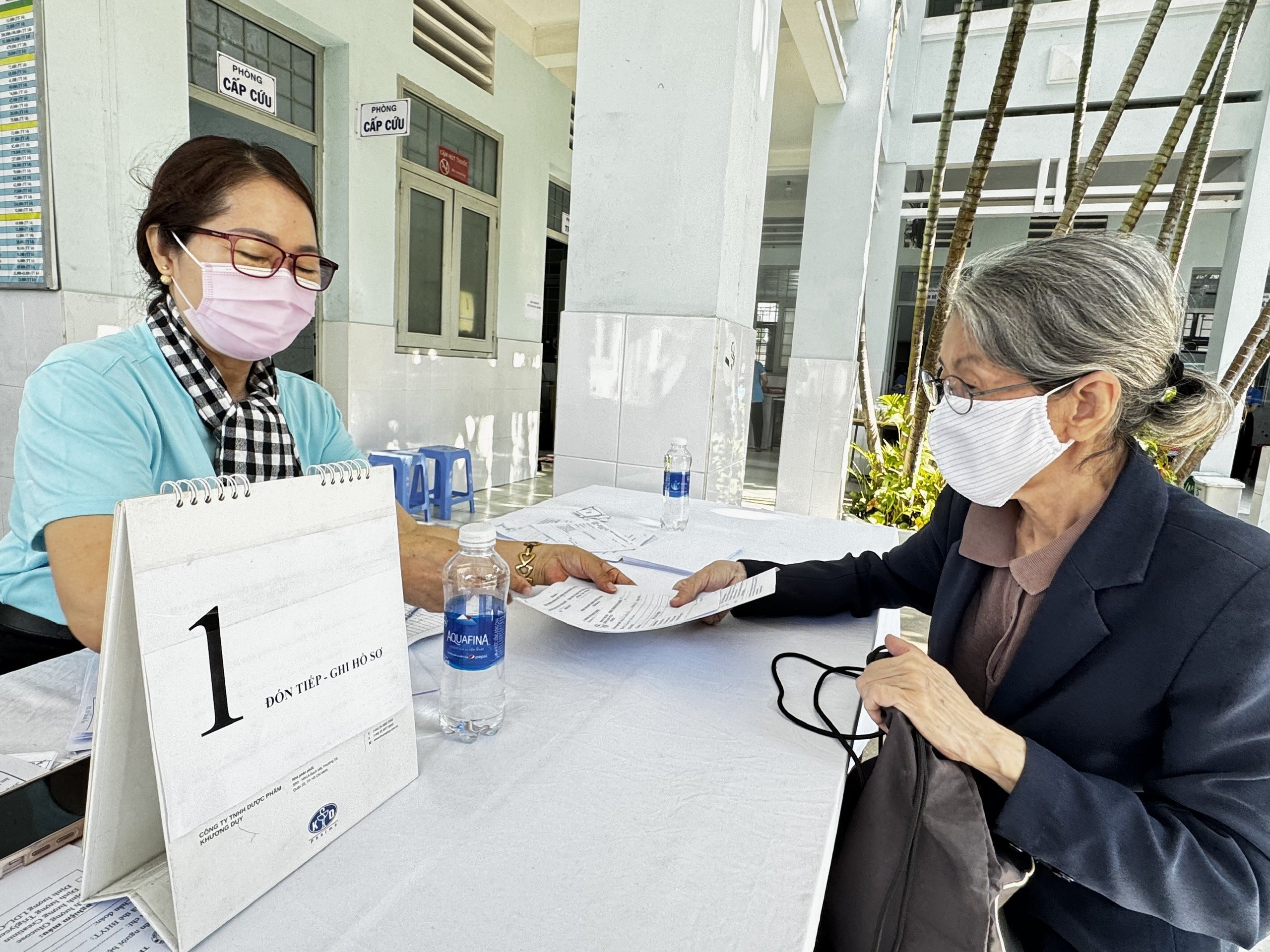
Osteoporosis is a leading cause of bone fractures, reduced mobility, and declining quality of life among the elderly. Photo: Thu Hien / Tuoi Tre
According to the International Osteoporosis Foundation, over 500 million people globally suffer from osteoporosis. Among them, 21.2 percent of women and 6.4 percent of men aged over 50 are affected.
Osteoporosis is a leading cause of bone fractures, reduced mobility, and declining quality of life among the elderly.
With more than 1.5 million elderly citizens, equivalent to about 16 percent of the city's population, Ho Chi Minh City is facing increasing pressure as its population ages rapidly.
The HCDC emphasized the urgent need for early prevention through proper nutrition and healthy lifestyle habits.
Pham Ngoc Oanh, head of the HCDC’s non-communicable disease nutrition department, highlighted that a balanced diet plays a key role in both preventing and managing osteoporosis.
For seniors and those at risk of musculoskeletal conditions, ensuring adequate intake of essential nutrients is vital for maintaining strong bones.
Calcium is the primary mineral for bone and tooth structure. It helps maintain bone density and is involved in various physiological functions, Oanh said.
Natural sources include dairy products like milk, cheese, and yogurt, as well as shrimp, freshwater crabs, fish, and leafy greens such as amaranth and celery.
Magnesium and phosphorus also contribute to healthy bone development and maintenance.
These minerals are widely found in beans, grains, dairy, eggs, beef, and chicken.
Vitamin D enhances calcium and phosphorus absorption in the digestive tract while reducing urinary loss.
It is primarily synthesized through sun exposure and is also found in foods such as milk, egg yolks, and fish liver oil.
Vitamin K supports calcium integration into the bones and plays a role in blood clotting.
It is abundant in dark green leafy vegetables like spinach, bok choy, kale, broccoli, as well as in eggs, meat, and oils such as soybean, sunflower, and grape seed oil.
Protein is another essential nutrient, helping to build muscle mass, protect bone structure, and reduce fracture risks, especially in the elderly.
Protein is abundant in meat, fish, eggs, milk, and legumes.
Globally, there are an estimated 37 million cases of osteoporosis-related fractures each year in people over 55, equivalent to 70 cases every minute.
Around one in three women and one in five men over 50 are expected to suffer at least one osteoporosis-related fracture in their lifetime.
The HCDC advised against unhealthy habits like high salt intake, smoking, and physical inactivity, explaining that all of which contribute to reduced bone density over time.
Excessive salt increases calcium loss through urine.
The World Health Organization recommends limiting daily salt intake to less than five grams.
Smoking disrupts calcium absorption, inhibits bone-forming cells, and decreases bone density.
Lack of physical activity weakens both muscle and bone, raising the risk of fractures and falls in older adults.
To counter this, the HCDC recommends at least 30 minutes of moderate-intensity exercise five days a week, tailored to individual health conditions.
Regular physical activity not only improves bone density but also helps reduce the overall risk of osteoporosis and related injuries.



Max: 1500 characters
There are no comments yet. Be the first to comment.